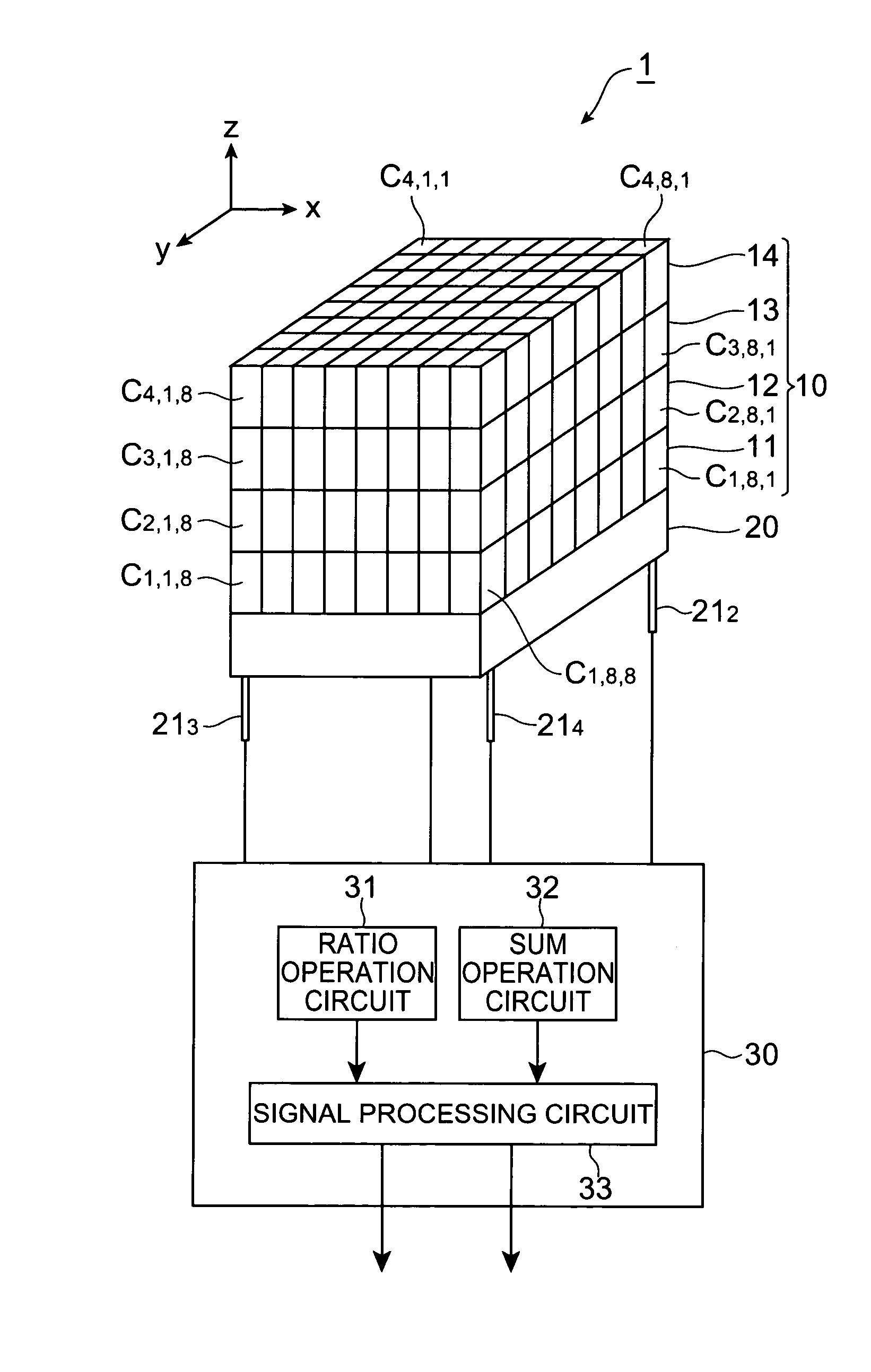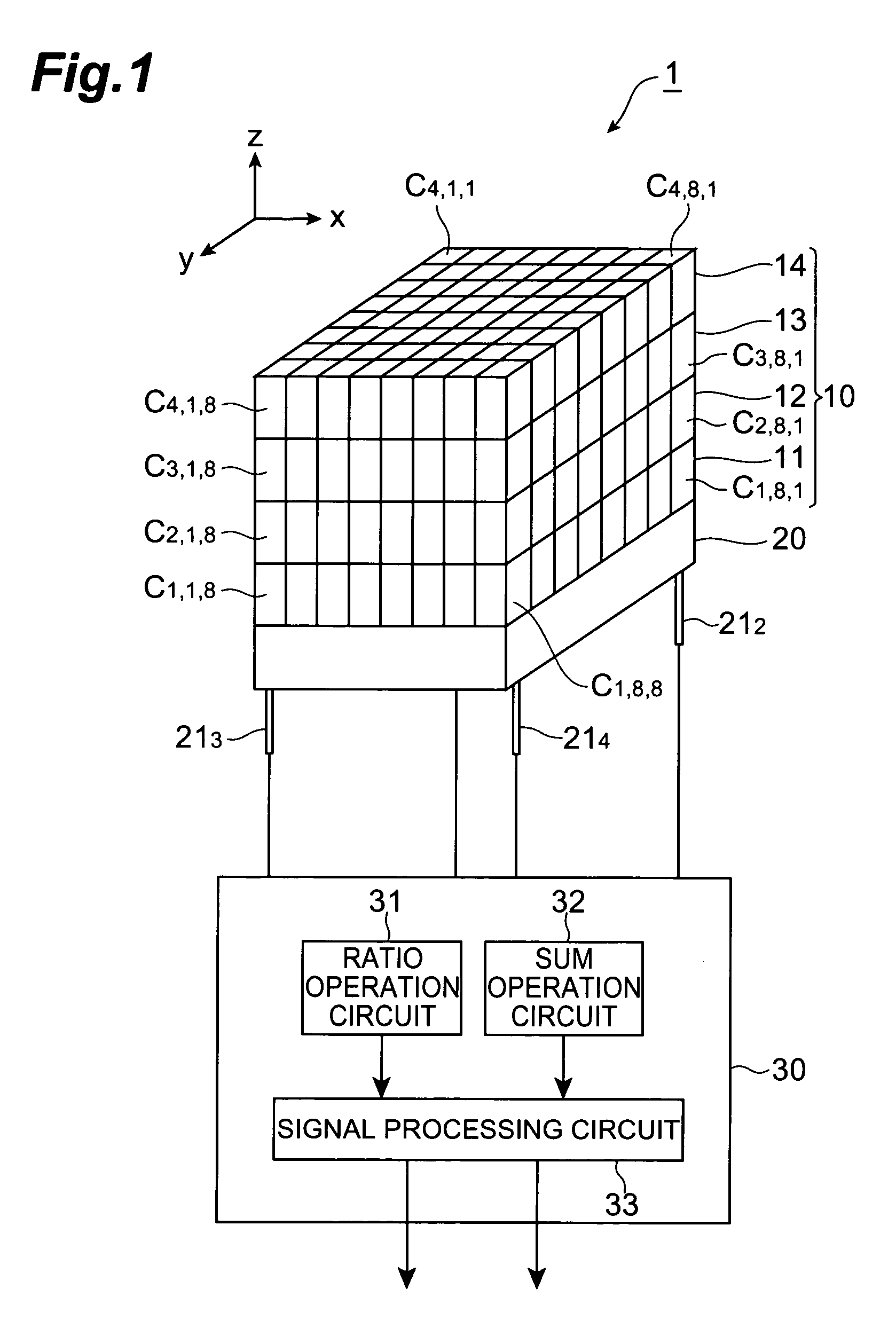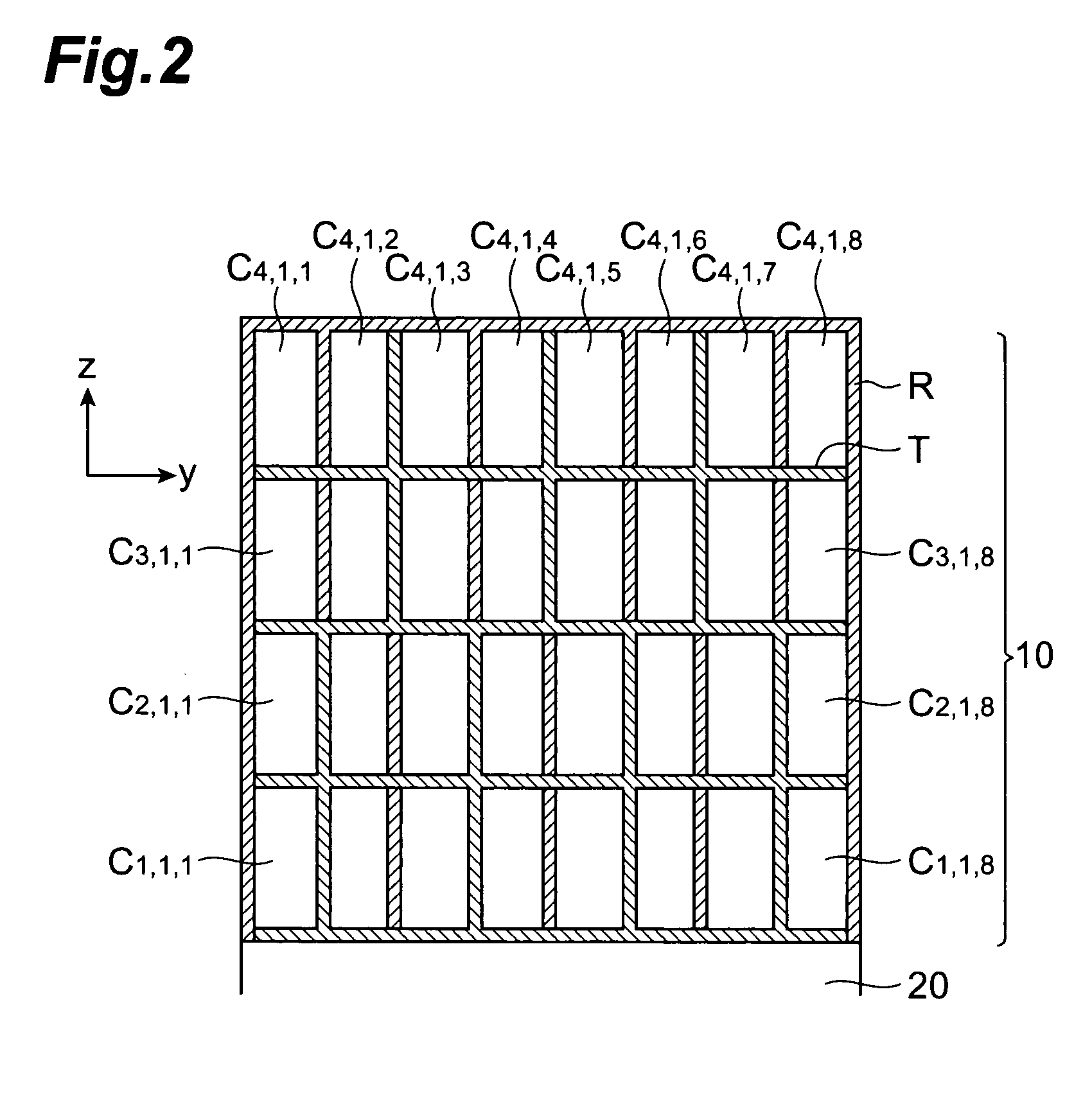Radiation three-dimensional position detector
a detector and three-dimensional technology, applied in the direction of instruments, radiation measurement, measurement devices, etc., can solve the problems of limiting the number of scintillator arrays to be laminated, limiting the detection accuracy of the position of absorbed radiation, and difficult to determine the corresponding scintillator cells
- Summary
- Abstract
- Description
- Claims
- Application Information
AI Technical Summary
Benefits of technology
Problems solved by technology
Method used
Image
Examples
first embodiment
[0050]FIG. 2–FIG. 7 is a sectional view of the scintillator unit 10 respectively included in the radiation three-dimensional position detector 1 in accordance with the FIG. 2 is a y-z sectional view of the scintillator unit 10 in the first row (m=1). FIG. 3 is an x-z sectional view of the scintillator unit 10 in the first column (n=1). FIG. 4 is an x-y sectional view of the scintillator array 11 in the first layer (k=1). FIG. 5 is an x-y sectional view of the scintillator array 12 in the second layer (k=2). FIG. 6 is an x-y sectional view of the scintillator array 13 in the third layer (k=3) FIG. 7 is an x-y sectional view of the scintillator array 14 in the fourth layer (k=4) In these drawings, some scintillator cells only are given with a code Ck,m,n. And the scintillator cells with no code are identified with code Ck,m,n in which any one of the suffixes k, m and n is increased by 1 in order.
[0051]In the scintillator array 11 in the first layer, the medium between the scintillato...
second embodiment
[0068]FIGS. 13–20 are a sectional view respectively of the scintillator unit 10 included in the radiation three-dimensional position detector in accordance with the FIG. 13 is a y-z sectional view of the scintillator unit 10 in the first row (m=1). FIG. 14 is an x-z sectional view of the scintillator unit 10 in the first column (n=1). FIG. 15 is an x-y sectional view of a scintillator array 11 in the first layer (k=1). FIG. 16 is an x-y sectional view of a scintillator array 12 in the second layer (k=2). FIG. 17 is an x-y sectional view of a scintillator array 13 in the third layer (k=3). FIG. 18 is an x-y sectional view of a scintillator array 14 in the fourth layer (k=4) FIG. 19 is an x-y sectional view of a scintillator array 15 in the fifth layer (k=5). And FIG. 20 is an x-y sectional view of a scintillator array 16 in the sixth layer (k=5). In these drawings, some scintillator cells only are designated with a code Ck,m,n. And the scintillator cells with no code are identified ...
PUM
 Login to View More
Login to View More Abstract
Description
Claims
Application Information
 Login to View More
Login to View More - R&D
- Intellectual Property
- Life Sciences
- Materials
- Tech Scout
- Unparalleled Data Quality
- Higher Quality Content
- 60% Fewer Hallucinations
Browse by: Latest US Patents, China's latest patents, Technical Efficacy Thesaurus, Application Domain, Technology Topic, Popular Technical Reports.
© 2025 PatSnap. All rights reserved.Legal|Privacy policy|Modern Slavery Act Transparency Statement|Sitemap|About US| Contact US: help@patsnap.com



